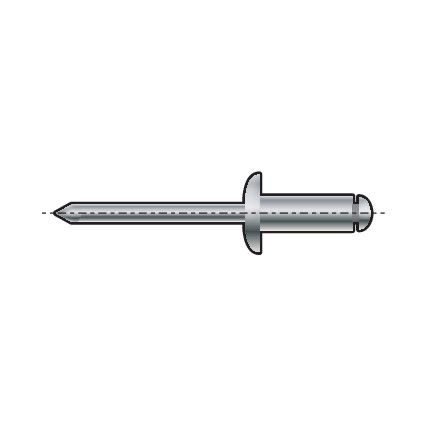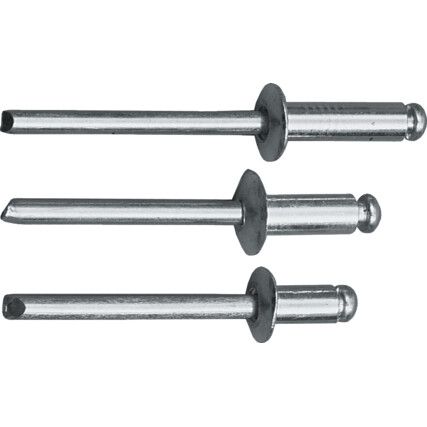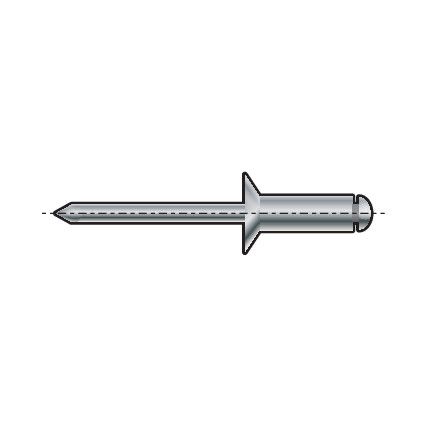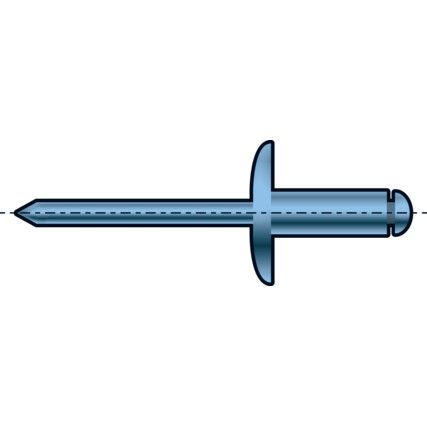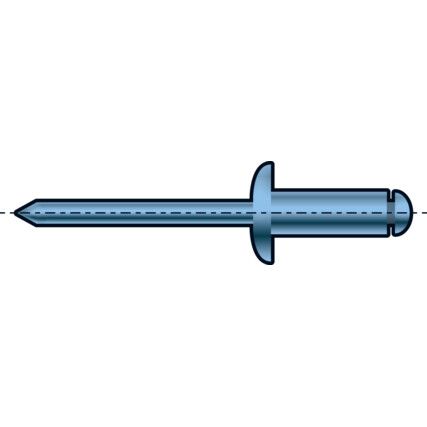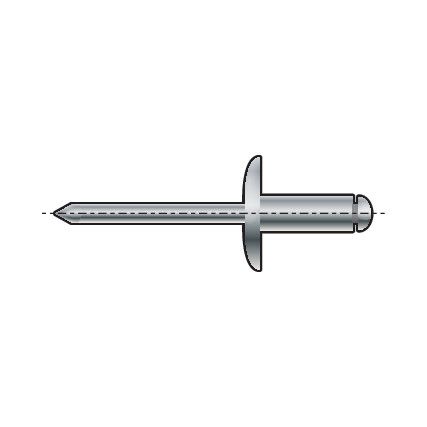Rivets
Rivets are metal fastenings that are usually beaten into materials to pin them in place permanently. Cromwell stock a range of different types of rivets from well known manufacturers like Qualfast and our own brand Kennedy.
What are rivets?
Rivets are used to fasten sheets of metal together; they feature a head and a stem. The rivet is punched through or placed into a pilot hole and then the tail is deformed, usually by pounting the tail until it firmly holds in position. Once beaten the tail resembles a dumbbell shape.
What are rivets used for?
Rivets can be used for either lap or butt joints with a variety of different rivet configurations, including single, double and zig-zag formations.
Types of rivets
• Blind rivets - Used when it isn't possible to see the other side of a join (blind). Used in a variety of sectors including aerospace, shipbuilding, and electronics.
• Drive rivets - A type of blind rivet that features a short mandrel atop the head. When driven in with a hammer it causes the end inserted into the hole to flare.
• Flush rivet - Provides good aesthetics and eliminates aerodynamic drag. They features countersunk heads and a countersunk hole which is why they are referred to as countersunk rivets.
• Friction-lock rivet - Available as countersunk or dome shaped, and resembling an expanding bolt, these early forms of blind rivet were the first to be used in aerospace applications.
• Oscar rivets - These types feature splits along the hollow shaft. This causes the shaft to bend and flare outwards as the mandrel is drawn into the rivet creating a wider surface area and securing the rivet in place.
• Self-piercing rivets - These rivets feature a chamfered poke to pierce materials to be joined. They can be used to create a water or gas-tight joint as the top sheet is pierced but not the bottom.
• Solid rivets (also known as round head rivets) - One of the oldest and an a stalwart of fasteners.
• Structural steel rivets - High-strength bolts have effectively made this type of rivet redundant but it is still found occasionally.
Considerations when choosing rivets
• Type of join - Does the surface need to account for drag or is the join blind?
FAQ
Why are rivets used?
Rivets create a join that is both stronger and tighter than a screw of the same diameter could achieve.
